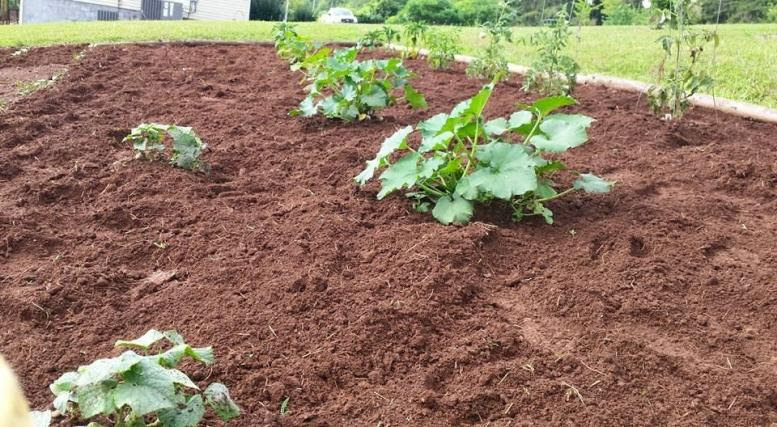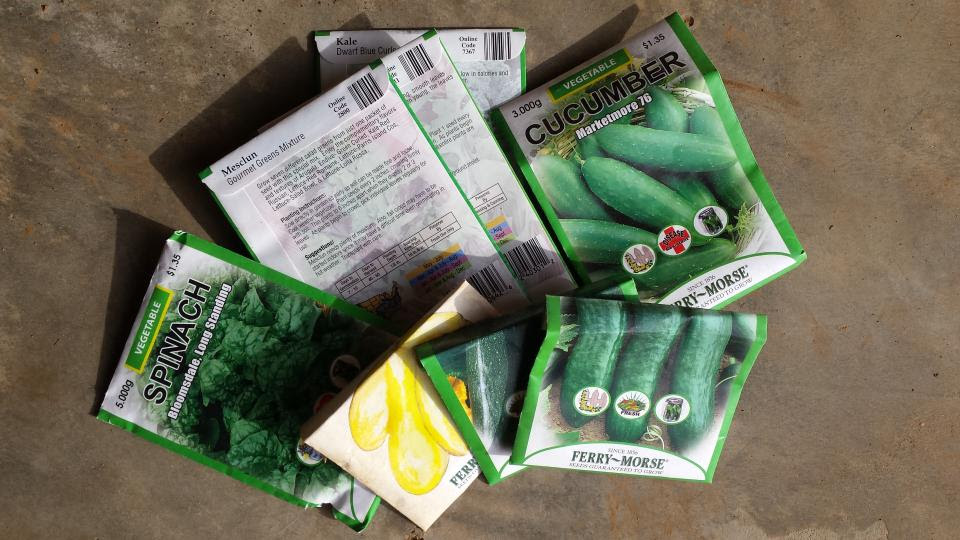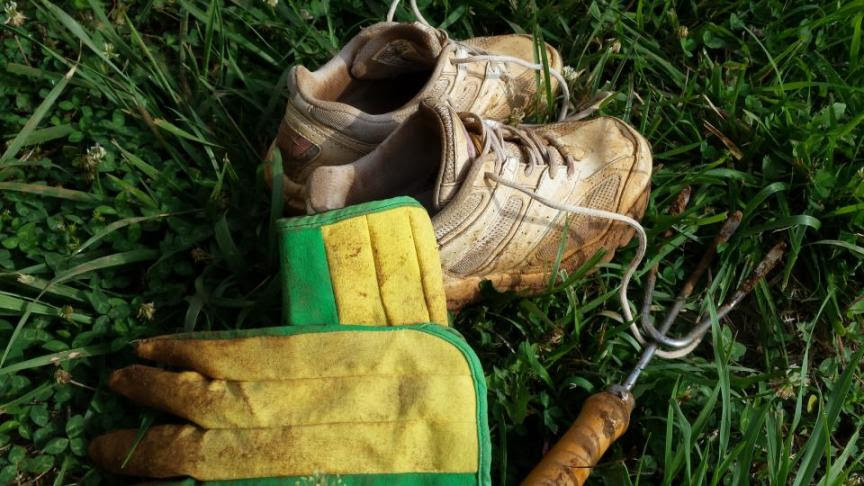There are three things you never want to turn your back on:
- Toddlers checking out your kitchen cabinets
- Puppies sniffing your shoes
- Vegetable garden after it’s been rained on several days in a row

Last Friday morning, I couldn’t tell the plants from the weeds, and I knew if we didn’t do something, nature would reclaim the land.
So that morning, my hubby and I put on our garden gloves and mud shoes and set off to weed and hoe and all that fun stuff.
Good news: we got it done!
Bad news: it took us two days
More bad news: it was hotter than hell!
Extremely bad news: humidity was about 90%
As we worked and sweated, I realized there are a lot of nonprofit fundraising lessons to learn from a garden. The more I thought about it, the more bubbled up.
See how many of these apply to you as you read the fundraising lessons I learned from my garden.
1. Have a plan. You don’t go out and just throw seeds on the ground. First, you choose the garden spot, then you till the soil. The better the soil, the better the garden, the better the vegetables. You decide what you want to plant, get the seeds, then put them in the ground. Nothing happens by chance. It’s all very purposeful. Your fundraising should happen the same way with everything planned out. You’ll never raise all the money you need to fully fund your programs if it happens by chance. Wildly successful fundraising follows a plan.
2. Plant at the right time. Not every seed can be planted in any given month. Some crops are cool-weather, which means they do better in the Fall. Spinach, radishes, and peas are good examples of crops that just won’t do well in the heat of the summer. You won’t see growth – instead you’ll see plants that struggle to survive and eventually wither and die. Timing is very important in fundraising. Hold events at the right time of year to get the most people there and raise the most money. Ask for donations at the right time in the cultivation of the relationship. There is absolutely a season for getting to know a donor and a season for inviting them to give.
3. Patience is critical. Every good farmer knows that seeds have a gestation period, and some sprout faster than others. But they all know this: You don’t pick the fruit the day you plant the seeds. And once you plant the seeds, you don’t keep digging them back up to check on them. Put them in the warm earth and wait for nature to do its thing. In fundraising, you shouldn’t ask someone for a gift the day you meet them. Well, I guess you can, but you won’t get much – this is why direct mail acquisition, or sending letters to people who have never given before – don’t do so well. People want to know you, like you, and trust you before they give. Learn about your donors and what they need from you before they’ll make a donation, and don’t rush it.
4. Keep the weeds out. In any garden, there are plants you want and plants you don’t. If you have good soil, weeds will sprout early and often. Stay on top of them, keeping them pulled out, and your vegetable plants will have room to grow and thrive. Think of your donor communications like a garden and keep the weeds out. Guard what your donors receive from your nonprofit. Don’t share things they don’t need to know. Share ONLY what they need to know to feel good about supporting your organization. Make sure they aren’t inundated with Save the Date cards, newsletters, and appeals all in the same week.
5. Don’t worry about crooked rows. It can be tough to plant a straight row. I’ve given up on that. Some plants do better when they’re in a smaller plot than in a long single line which doesn’t give them a chance to pollinate. And really, if your end goal is to get fresh veggies, who cares if the rows are straight? I know, this is tough for Perfectionists, but it’s a waste of time – nature likes chaos. In fundraising, things don’t always go in a straight line, either. Things don’t happen the way you plan or sponsorships require an extra step. It’s good to be able to go with the flow and not get hung up on the wrong thing.
6. Use the right tool. About an hour into weeding the garden, I realized that I wasn’t making much progress even though I’d been working really hard. I was using a spade, which is great for getting an individual weed up, but I needed to cover a lot of ground and do it quick. I switched to a cultivator rake and everything changed. Not only was it easier, but I could cover a lot of ground quickly. In fundraising, using the right tool is also a good idea. Not every fundraising strategy will work for every nonprofit. It’s important to focus on the ones that will help you reach your goals with the least effort and resources. In other words, don’t try to do a golf tournament just because the nonprofit down the street just had a good one. Do what works for YOUR nonprofit.
7. Many hands make light work. This old saying is true! The bigger the project, they more you need help. There’s no way I could tend my big garden by myself, nor could I eat everything it produces by myself. I usually give a lot away and can lots of green beans. I’ve seen lots of nonprofit folks try to plan and execute a big event by themselves, or with just one other person. It makes no sense to me to do that. Involving others is a smart move – they’ll bring fresh energy and ideas to the mix, and sometimes they have connections for new sponsors that you don’t have. When you add new folks to a committee, it also gives you a way to evaluate them as potential new Board members to see if they keep their word and get things done.
8. Pick when the fruit is ripe. I don’t like underripe vegetables – they’re hard and sometimes don’t taste right. And I don’t like them when they’re overripe and mushy either. It’s important to pick when they’re just right. That’s when they’ll taste the best. The same goes for donors. Don’t try to ask for a donation before a donor is ready and don’t cultivate them forever either. Ask when they are ready to be asked.
9. Bugs are inevitable. In my garden, we battle bugs all summer long. I prefer not to use chemical pesticides (don’t get me started!) so we fight them using a variety of natural remedies and removing them by hand (is my life exciting or what?). I’ve come to accept that bugs are just part of gardening. I wouldn’t give up the whole garden just because of a few beetles that are eating my squash. In fundraising, you will deal with challenges like naysayers on your Board, volunteers that fail you, sponsors that back out, donors who lose their job and stop giving for a while, and more. Don’t give up on your fundraising goal just because something happens that seems like it could derail your whole plan. Stay focused on your goal and keep moving forward.
10. Enjoy the bounty! It’s so fun at my house at dinner time. We say “Let’s go to the garden and see what’s for dinner.” There’s nothing better than feasting on fresh veggies that were picked less than an hour before. I love knowing where my food comes from and how it was grown. In fundraising, we don’t do a very good job of celebrating our wins. We have a successful event and raise a bunch of money, and we celebrate for about 30 seconds before we’re on to the next thing. Celebrate when things go well! You’ve worked hard, so enjoy it.
So, there are my 10 fundraising lessons from the garden. I’d love to know which one resonates the most with you.








Leave A Comment